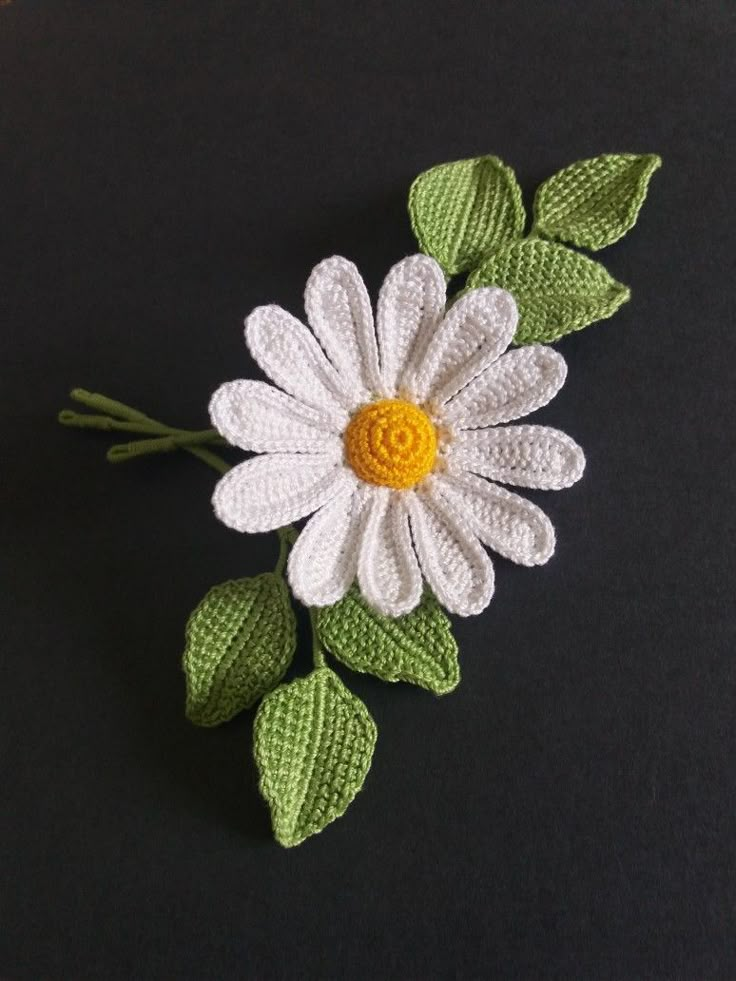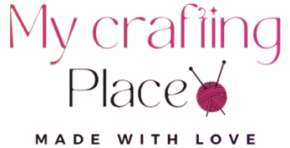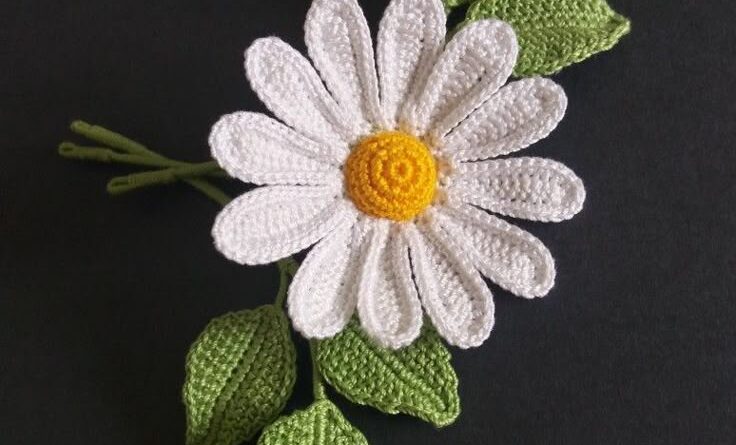Crochet chamomile flower
Today we’ll tell you the story of how we came up with the idea of crocheting chamomile flowers and how these flowers are perfect for embellishing accessories, home decor, or even bridal bouquets. With the right strategies, if you know how to leverage your skills, you’ll be very successful. In this article, we’ll explore how crochet chamomile flowers can turn from a creative outlet into a profitable business venture. We’ll also provide a beginner’s tutorial and discuss the essential materials you’ll need.
Unlike real flowers, crocheted chamomiles never wilt, they last forever and carry sentimental value. Many people look for handmade floral decorations for weddings, baby showers, or even as thoughtful gifts. The demand for sustainable, long-lasting alternatives to fresh flowers is growing, and crochet artisans are perfectly positioned to meet this need. And the best part is that you can mix and match colors or make them seasonal.
Did you know that chamomile has been prized for centuries, not only for its beauty but also for its calming properties? The ancient Egyptians dedicated this daisy-like flower to their sun god, Ra, believing it had healing powers. In medieval Europe, chamomile was sprinkled on the floor to scent homes and repel insects—a natural air freshener! Even today, its soothing tea is a staple in many homes. By crocheting a chamomile flower, you’re incorporating a bit of this rich history into your craft.

Step by step tutorial: Crochet chamomile flower
Let’s break the process down into simple steps. Start with a magic ring and make six single crochets (sc) into it. Join with a slip stitch. For the second row, make two sc into each stitch (12 stitches total). Then, start the petals: make three chains and three double crochets (sc) into the same stitch. Skip the next stitch and make a slip stitch into the next. Repeat this to form all the petals. For the center, switch to yellow yarn and create a small set of double crochets. Weave the ends together and voilà — your first chamomile!
Essential materials for making crochet chamomile flowers
Before you start your first chamomile, gather the right materials. You’ll need lightweight cotton or acrylic yarn in white (for the petals) and yellow (for the center). A 2.5mm or 3mm crochet hook works best for delicate details. Don’t forget sharp scissors, a yarn needle to sew the ends together, and optionally floral wire and green ribbon if you want to create the stems. Stitch markers can help keep track of your rows, especially for beginners. Investing in quality materials will ensure that your flowers look polished and professional, which is essential for selling your work.
If you want your chamomiles to stand out in the marketplace, attention to detail is crucial. Consider starting the petals lightly to help them hold their shape. You can also attach them to hair clips, brooches, or hoop earrings for added versatility. For a rustic look, wrap the stems in floral tape and arrange them in bouquets. Packaging also matters, as presenting your flowers in pretty boxes or organza bags increases their perceived value. Little details like these justify higher prices and attract discerning buyers.
Let me tell you about Maria, a stay-at-home mom who started crocheting chamomile flowers just to relax after putting the kids to bed. One day, she posted a photo of her creations on Instagram and, to her surprise, a bride messaged her, desperate for handmade chamomile boutonnieres after her florist canceled service. Within a year, her Etsy shop, Maria’s Crochet Garden, was making enough money that her husband was able to cut back on his overtime. Now, every time she embroiders the yellow center of a chamomile, she is reminded of how this little flower changed her family’s life.
How to make your crochet flowers go viral
Even the most beautiful crochet flowers won’t sell without visibility. Start by creating a website or social media page dedicated to your craft. High-quality photos in natural light make all the difference—style your chamomiles as flat layers or as accessories. Use hashtags like #CrochetFlowers and #HandmadeWithLove to reach the right audience. The key is to stay adaptable and innovate, whether through new designs, limited editions, or collections.
Here’s the game-changing trick that seasoned crochet sellers won’t tell you: Stop making individual flowers. When I discovered the power of “crochet kits,” my income skyrocketed while my workload plummeted. Instead of crocheting 50 chamomiles for a wedding proposal, I now sell DIY kits with pre-measured yarn, hooks, and my secret PDF of patterns. Customers pay top dollar for the experience of making them “themselves” (with your guidance). A $35 kit takes me 10 minutes to assemble instead of hours of crocheting, and brides love the “handmade with love” story it creates. Bonus? These kit buyers often come back for their finished pieces after realizing that crocheting is harder than it looks!
Remember Maria’s chamomile flowers that turned into a thriving business? That could be you. The secret isn’t perfection—it’s simply getting started. Here’s my challenge to you: Make one chamomile today, just to feel the thread between your fingers. Then make another tomorrow. Before you know it, you’ll have a bouquet. And somewhere out there, a bride, a gift-seeker, or a fellow crafter is waiting for the very thing that only your hands can make.
So, let’s improve?
If you are looking for a way to open a business and profit from crochet, crochet chamomile flower is a great option. So, let’s improve your knowledge even further? How about you check out this link? I emphasize that the credits for the images and content of the template go to the official website.
Free instructions here: Crochet chamomile flower


